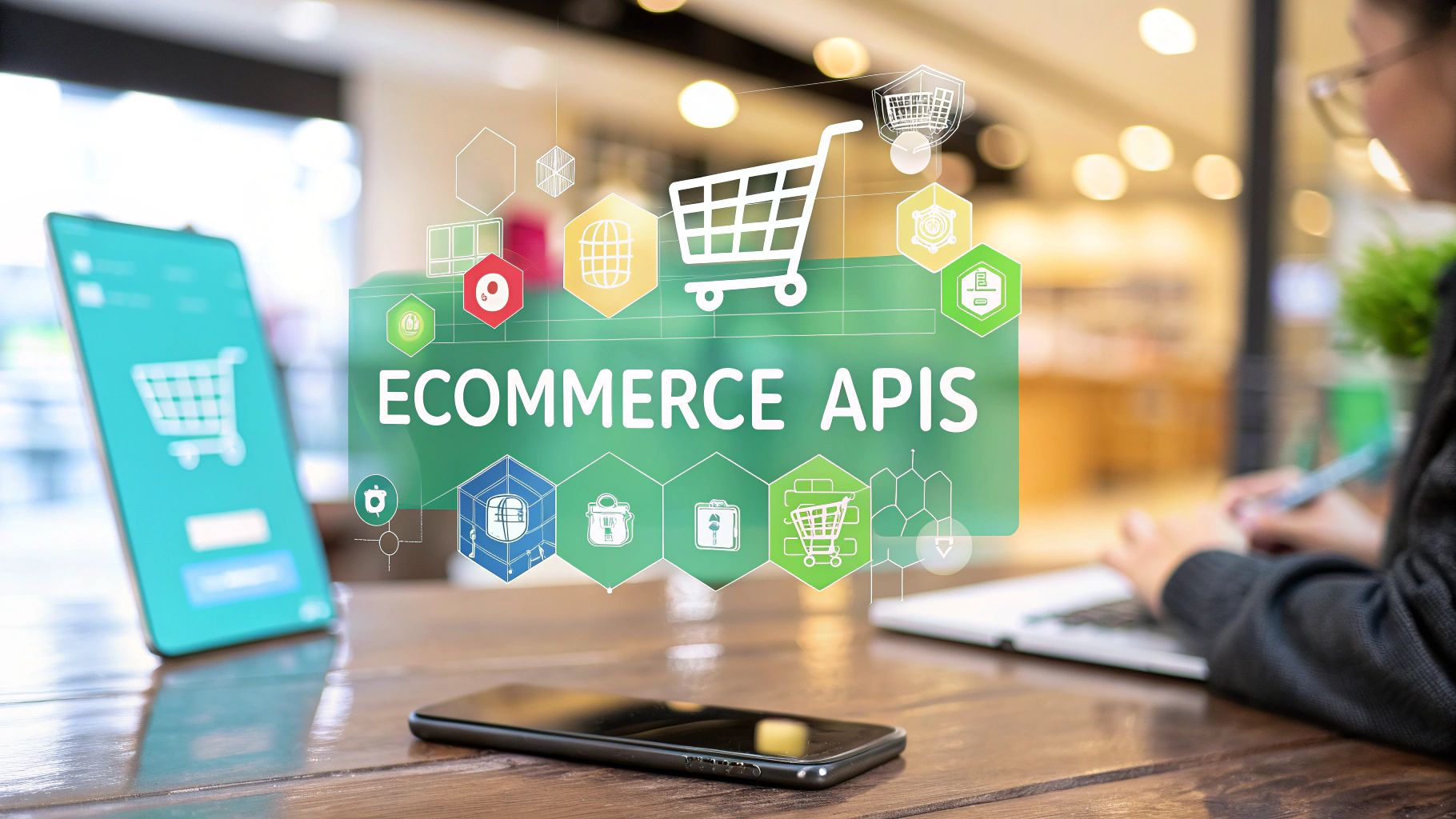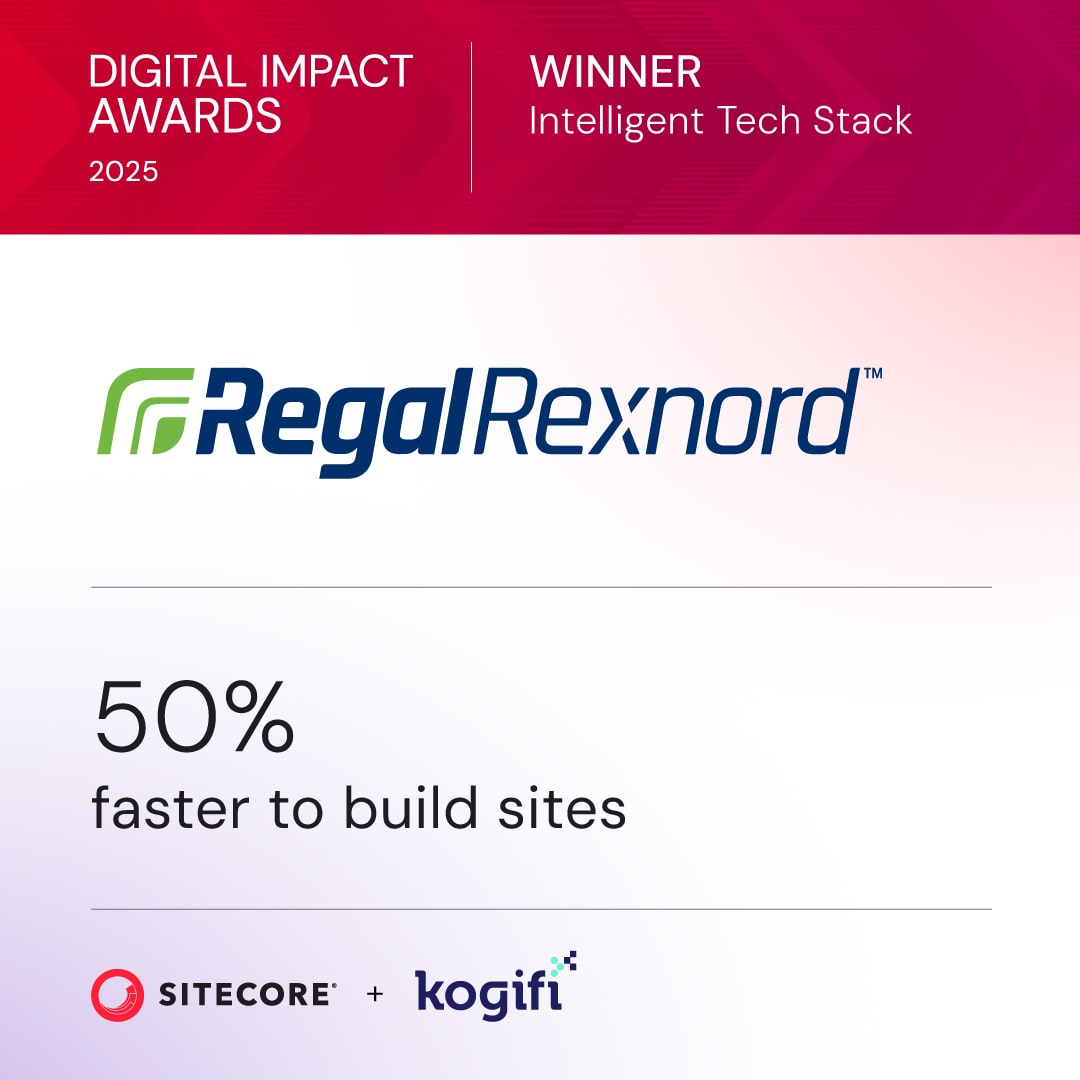AI-driven personalization is changing how businesses interact with customers through Digital Experience Platforms (DXPs). By analyzing user data, AI delivers tailored content, predicts customer needs, and adjusts experiences in real time. This approach not only improves engagement but also boosts sales and customer satisfaction. Here's how:
- Machine Learning: Predicts user preferences and evolves with each interaction.
- Natural Language Processing (NLP): Understands user intent and sentiment for better communication.
- Real-Time Data Processing: Responds instantly to user behavior for timely, personalized experiences.
Companies like Home Depot and Coursera have already seen measurable growth by using AI to personalize customer experiences. However, challenges like data privacy, system integration, and finding skilled professionals remain barriers. Partnering with experts like Kogifi can help businesses implement AI personalization effectively while addressing these challenges.
AI personalization is no longer optional - it’s a key driver of customer loyalty and business growth. Start by consolidating your data, using AI tools for segmentation, and delivering personalized content across all digital touchpoints.
Artificial Intelligence Powered Hyper Personalization with Liferay

Key AI Technologies for Personalization
AI technologies play a critical role in transforming raw data into tailored experiences. Let’s explore three key technologies that make advanced personalization in Digital Experience Platforms (DXPs) possible.
Machine Learning for Predictive Personalization
Machine learning lies at the heart of predictive personalization, enabling systems to analyze vast amounts of user data and adapt continuously to predict future needs. Unlike traditional rule-based systems, machine learning algorithms evolve over time, becoming more accurate with each interaction.
"Machine Learning is a branch of Artificial Intelligence and computer science that uses data and algorithms to imitate how humans learn, gradually improving accuracy." – IBM
This ability to evolve ensures that personalization efforts remain scalable and dynamic, allowing platforms to not only respond to past behaviors but also anticipate what users might need next. According to McKinsey, companies that excel in hyper-personalization generate 40% more revenue compared to their peers.
A great example of this is Princess Polly, an online fashion retailer. In November 2024, they implemented predictive personalization on their homepage. When visitors select their shopping region, the system automatically localizes prices, stock availability, and shipping details. It even predicts the visitor’s location to pre-fill discount forms, streamlining the shopping experience.
To get started with machine learning for predictive personalization, businesses should gather data from various customer interactions - such as website activity, social media engagement, and email campaigns. Using predictive tools, this data can then be analyzed to identify patterns and trends, enabling accurate forecasts of customer behavior.
While machine learning focuses on prediction, Natural Language Processing takes personalization a step further by understanding user intent and sentiment.
Natural Language Processing for Contextual Understanding
Natural Language Processing (NLP) interprets the meaning behind user interactions, analyzing text and speech to uncover intent, sentiment, and context. This makes it an essential tool for delivering content that feels relevant and personal.
NLP is particularly effective at creating detailed customer profiles. By analyzing interactions across platforms - including unstructured data from social media, reviews, and emails - it helps platforms understand not just what customers are saying, but how they feel and what they mean. This deeper understanding enables businesses to tailor their messaging and content more effectively.
One practical application of NLP is sentiment analysis, which allows marketers to gauge emotions in customer communications and adjust their strategies in real time. When combined with predictive analytics, NLP can even anticipate customer needs and make proactive adjustments. For instance, American Airlines revamped its Interactive Voice Response system with NLP, leading to a 5% improvement in call containment. This change not only saved millions of dollars annually but also boosted customer satisfaction.
NLP also supports the creation of dynamic, adaptive content by analyzing user interactions and adjusting accordingly.
While NLP and machine learning focus on analyzing data to make predictions, real-time processing ensures that personalization happens instantly.
Real-Time Data Processing for Adaptive Experiences
Real-time data processing enables businesses to deliver personalized experiences immediately by analyzing and acting on data as it’s created. This capability allows companies to respond to changes in user behavior or external events without delay, ensuring that interactions remain relevant and timely.
Technologies like event streaming, processing engines, and real-time databases make dynamic, millisecond-level content adaptations possible. For example, eCommerce platforms can suggest complementary products the moment an item is added to a cart, or streaming services can recommend content based on what a user just watched.
In retail, real-time processing is particularly impactful. It allows businesses to adjust pricing dynamically based on factors such as demand, inventory levels, and competitor activity. This ensures that pricing strategies are as personalized as the content itself. Companies that prioritized digital experiences during the 2007–2009 period outperformed their competitors by a factor of three, highlighting the value of real-time adaptability.
To effectively leverage real-time data processing, businesses should focus on automating these processes to minimize latency. Using visualization tools and dashboards can also provide immediate insights, helping teams monitor performance and make quick decisions.
Together, these technologies - machine learning, NLP, and real-time processing - create a powerful framework for delivering personalized and adaptive digital experiences.
How to Implement AI Personalization in DXPs
AI personalization in Digital Experience Platforms (DXPs) unfolds in three key phases: gathering and integrating data, creating dynamic audience segments, and tailoring content to individual preferences.
Data Collection and Integration
Everything starts with building a unified view of your customers. This means pulling together data from every touchpoint in your digital ecosystem. The better your AI algorithms understand customer behavior, the more accurate their predictions will be.
To achieve this, collect both structured data (like demographics, purchase history, and analytics) and unstructured data (such as social media activity and customer feedback). Together, these create a comprehensive view of your users' habits and preferences.
Equally important is ensuring your DXP integrates seamlessly with tools like your CRM, email marketing platforms, and social media systems. This connected setup provides a complete picture of the customer journey, allowing AI to spot patterns that might be missed when analyzing data in isolation.
But remember, quality trumps quantity. Focus on gathering data that directly informs personalization decisions. For example, knowing how long users spend engaging with specific types of content can be far more useful than simply tracking page views.
Transparency and trust are non-negotiable. Be upfront with customers about how their data is used, and let them control their personal information. This not only builds trust but also ensures compliance with privacy regulations.
With this data foundation in place, you're ready to move into the next phase: segmenting your audience dynamically.
Dynamic Audience Segmentation
Once you've consolidated your data, AI can transform audience segmentation into a dynamic, real-time process. Unlike traditional static segments, AI-powered segmentation adapts to users' changing behaviors and preferences.
By analyzing multiple data points, AI reveals deeper patterns. Instead of broad categories like "frequent buyers", it can uncover more specific groups based on nuanced behaviors. For instance, AI might identify a segment of users who frequently browse but only purchase during sales, or those who prefer premium products during certain times of the year.
Dynamic segmentation allows users to shift between groups as their behavior evolves. A customer might be classified as "deal-seeking" during the holiday season but later move to a "premium shopper" segment. This adaptability ensures that your personalization efforts stay relevant.
Behavioral data is the backbone of this process. AI tracks interactions like clicks, time spent on pages, scrolling behavior, and conversion paths to understand user intent. To create effective segments, combine this behavioral data with demographic insights to build detailed user profiles.
Automation is critical. As new data streams in, AI continuously updates segment assignments and refines personalization strategies in real time. This ensures your efforts stay aligned with current customer behavior.
Content Personalization and Optimization
With dynamic segments in place, the next step is tailoring content to meet their evolving preferences. This phase focuses on delivering experiences that feel personal and engaging, going beyond basic product recommendations.
AI-powered content recommendation engines analyze user behavior and segment attributes to identify the most relevant content for each individual. This could mean personalizing homepage layouts, product displays, email content, or even search results.
Advanced systems can take it a step further by creating entirely customized digital experiences. For instance, AI can generate personalized landing pages or reorder product displays based on a user's past interactions. Some tools even adapt content in real time during a single session, ensuring it aligns with the visitor's immediate interests.
Optimization is an ongoing process. AI can simultaneously test multiple personalization strategies and automatically adjust based on performance data. This constant refinement improves your efforts over time.
Personalization should also extend beyond your website. Email campaigns, social media interactions, and other touchpoints should maintain a consistent, personalized experience. This consistency strengthens customer relationships.
Finally, include a feedback system in your personalization strategy. User feedback helps your AI models learn and refine their recommendations, ensuring they stay effective. Choose an AI engine that adapts as new data comes in and supports your team with real-time tools and insights. Over time, fine-tune your approach by incorporating both data and feedback into your system.
sbb-itb-91124b2
Benefits and Challenges of AI Personalization
When it comes to improving digital experience platforms (DXPs), AI personalization stands out as a game-changer. But like any powerful tool, it comes with its own set of advantages and hurdles. To make the most of it, businesses need to strike a careful balance between reaping its rewards and navigating its challenges.
Key Benefits
AI personalization has a direct and measurable impact on both revenue and customer engagement. Companies leveraging AI for personalization often see a five to eight times return on their marketing investment. This isn't just a number - it’s proof of how well AI can deliver exactly what customers are looking for, precisely when they need it.
The ability to create tailored experiences also plays a huge role in customer satisfaction. Consider this: 71% of consumers expect personalization, yet 67% feel frustrated when it’s missing. AI bridges this gap by analyzing customer data to deliver relevant content, personalized marketing messages, and customized offers that make customers feel valued and understood.
The impact on conversion rates is equally impressive. Take the example of BSH Group, a global leader in home appliances. By partnering with Medallia, they implemented AI personalization across 40 touchpoints, including websites, emails, in-store interactions, and CRM systems. The results? A 106% boost in overall conversion rates and a 22% increase in add-to-cart rates. By identifying where customers dropped off and tailoring experiences in real time, BSH achieved remarkable success.
AI also simplifies operations. Instead of manually creating content for every audience segment, AI automates the process, tailoring messages for large audiences with minimal manual effort. This saves both time and resources, especially as businesses scale.
Finally, AI provides invaluable insights into customer behavior. By analyzing user interactions, it uncovers preferences, patterns, and trends that might otherwise go unnoticed. These insights can shape not only personalization strategies but also broader business decisions.
However, alongside these benefits, organizations must also address some significant challenges.
Common Challenges
One of the biggest hurdles is data privacy. Only 51% of customers trust organizations to handle their personal data securely and responsibly. This trust gap creates tension between the need for data to drive personalization and customers' comfort with sharing it.
Integration is another challenge. Connecting AI personalization tools to existing systems can be complex and expensive, with costs ranging from thousands to millions of dollars depending on the architecture. Many businesses struggle with fragmented systems that hinder seamless personalization.
Then there’s the talent shortage. The demand for skilled AI and data science professionals far outpaces supply. By 2025, the U.S. alone is expected to face a shortage of 250,000 data scientists, making it tough for companies to find the expertise needed to implement and maintain AI systems.
Data quality is another sticking point. AI is only as good as the data it’s fed, and many organizations grapple with incomplete, outdated, or inconsistent customer information. Poor data can lead to irrelevant recommendations, which risk alienating customers rather than engaging them.
Finally, while automation is a strength, it’s not without risks. AI can process massive amounts of data and make real-time decisions, but it lacks the nuanced understanding that human marketers bring to the table. Striking the right balance between automated efficiency and human insight requires ongoing effort and fine-tuning.
Benefits vs Challenges Comparison
| Aspect | Benefits | Challenges |
|---|---|---|
| Financial Impact | 5–8× return on marketing spend | Implementation costs ranging from thousands to millions |
| Customer Trust | Higher satisfaction through personalized experiences | Only 51% of customers trust organizations with their data |
| Operational Efficiency | Automated content personalization for large audiences | Complex integration with existing systems |
| Data Insights | Better understanding of customer behavior | Issues with incomplete or inconsistent data |
| Scalability | Grows without proportional resource increases | Shortage of 250,000 data scientists by 2025 |
| Customer Experience | 106% conversion rate increase (BSH example) | Over-automation risks losing the human touch |
This side-by-side comparison highlights the dual nature of AI personalization. While the benefits - like increased revenue, better customer experiences, and operational efficiency - are undeniable, success hinges on tackling the challenges head-on. Businesses that prioritize data quality, invest in privacy measures, and build skilled teams will be better equipped to maximize the potential of AI personalization while minimizing its risks.
Kogifi's AI Personalization Services

Kogifi is your go-to partner for implementing AI-driven personalization. With a blend of technical expertise and strategic insight, they transform digital experiences by integrating intelligent personalization into every aspect of your digital strategy.
DXP Services and Solutions
Kogifi ensures you get the most out of your Digital Experience Platform (DXP) by embedding personalization capabilities right from the start. Unlike treating AI as an add-on, their approach integrates these features into the core of your platform.
Their expertise goes beyond just implementation. Kogifi’s Digital Marketing enablement program empowers marketing teams with actionable data and strategies to create consistent, personalized online experiences. From marketing automation to optimizing customer interactions, they help businesses fully utilize their DXP investments.
Kogifi’s omnichannel solutions ensure your customers enjoy seamless, tailored experiences across various touchpoints - websites, mobile apps, email campaigns, and even in-store interactions. These solutions adapt to customer behavior and preferences, delivering a truly personalized journey.
Platform Expertise
Kogifi brings deep knowledge of enterprise-grade platforms, making them an invaluable partner for businesses aiming to enhance digital personalization. As a Sitecore Silver Solutions Partner, they specialize in Sitecore's advanced personalization features, while also offering expertise in Adobe Experience Manager and SharePoint.
Tomasz Cymerman, Managing Director for EMEA at Kogifi, highlights their platform-driven approach:
"Leveraging platforms like Sitecore, Adobe, and Umbraco, we can help companies optimize their digital channels and provide personalized omnichannel journeys fueled by customer data and AI capabilities. Our expertise in digital marketing and ecommerce implementations will allow us to be a strategic partner for KSA businesses looking to succeed in today's digital landscape."
Their capabilities extend to personalization engines, omnichannel strategies, 360 analytics, digital strategy development, and advanced segmentation. These tools ensure that your AI personalization efforts deliver measurable business results.
Support and Consulting Services
Kogifi doesn’t just stop at implementation - they offer ongoing support and consulting to ensure your AI personalization strategy evolves and remains effective. Their structured five-step approach addresses every aspect of implementation and maintenance:
- Analysis, Audit, and Optimization: Evaluate your current digital setup to uncover opportunities for improvement. They use smart market practices to drive growth and avoid costly missteps.
- Expert-led Workshops: Equip your team with practical strategies to engage audiences and build a data-driven digital marketing plan with measurable ROI.
- Web Design and Development: Create user-friendly websites with built-in personalization features for exceptional performance.
- 24/7 Support and Hosting: Ensure consistent performance and reliability with industry-standard hosting services backed by a robust SLA.
- Dedicated Team Services: Access top industry experts for ongoing consultancy and staff augmentation, providing the skills you need without building an in-house team from scratch.
This comprehensive support framework addresses the challenges of finding skilled AI professionals, offering businesses the expertise they need to continually improve their personalized digital experiences. By focusing on dynamic adaptation and user-centric strategies, Kogifi ensures your personalization efforts stay effective and impactful.
Conclusion
AI-powered personalization is transforming how businesses connect with their customers. By turning one-size-fits-all interactions into customized experiences, AI fosters stronger engagement and builds lasting connections.
Key Takeaways
Using AI-driven personalization within Digital Experience Platforms (DXPs) can significantly enhance customer engagement. By leveraging machine learning, businesses can predict user needs and deliver tailored content. Natural language processing (NLP) adds a layer of contextual understanding, making interactions feel more natural and relatable. Real-time data processing further strengthens this approach, allowing DXPs to adjust instantly to user behavior across various digital channels.
These tools and strategies are paving the way for actionable, real-world applications.
Next Steps for Implementation
To get started with AI personalization, take a measured, step-by-step approach that balances ambition with practical execution.
- Consolidate Customer Data: Gather and organize key data - like demographics, behaviors, transactions, and context - using tools such as Customer Data Platforms (CDPs) or analytics software.
- Start Small with Automation: Begin with simple strategies like automated drip campaigns, and gradually incorporate more advanced personalization using chatbots and conversational AI.
- Focus Your Efforts: When exploring customer journey orchestration, limit your initial efforts to one or two channels. This helps maintain focus and ensures measurable results.
Data privacy is a critical element of any personalization strategy. Be transparent about how customer data is used, implement robust security measures, and adhere to relevant privacy regulations. This builds trust while enabling effective personalization.
For technical execution, consider partnering with experts. Companies like Kogifi specialize in simplifying AI integration and offer ongoing support to adapt strategies as customer expectations evolve. Their expertise with platforms like Sitecore, Adobe Experience Manager, and SharePoint ensures a strong foundation for long-term success.
With AI, machine learning, and NLP at your disposal, these steps can help you create deeply personalized digital experiences. Evaluate your current digital capabilities and craft a strategy designed to deliver maximum impact.
FAQs
How does AI-powered personalization in digital experience platforms boost customer engagement and satisfaction?
AI-driven personalization in digital experience platforms (DXPs) takes customer engagement to the next level by delivering customized content and experiences shaped around each user's preferences, behavior, and real-time data. This approach ensures interactions feel more relevant, helping users build a stronger connection with your brand.
By predicting user needs and providing personalized recommendations, AI helps nurture trust and loyalty, laying the foundation for lasting relationships. When customers feel recognized and valued, they’re more inclined to return, boosting both satisfaction and engagement over time.
What challenges do businesses face when using AI for personalization in digital experience platforms, and how can they address them?
Implementing AI-powered personalization in digital experience platforms (DXPs) comes with its fair share of challenges. Businesses often grapple with data privacy and security concerns, the high computational demands of running AI models, and the tricky task of keeping personalization ethical and non-intrusive. On top of that, integrating AI with existing systems and ensuring data quality are frequent stumbling blocks.
To tackle these issues, companies should prioritize strong data governance, invest in scalable and reliable infrastructure, and design AI systems that emphasize transparency and ethical practices. With thoughtful planning and continuous monitoring, businesses can strike the right balance - delivering personalized experiences without compromising customer trust.
How can businesses protect customer data and build trust when using AI for personalization in digital experience platforms?
To safeguard customer data and earn trust, businesses should incorporate privacy-by-design principles right from the start. This means embedding privacy protections directly into AI systems during development. Limit data collection to what’s strictly necessary, and use tools like data masking or pseudonymization to protect sensitive information.
Being upfront with users is essential. Clearly explain how their data will be used and offer opt-in options to give them control over their preferences. By creating a solid privacy framework and adhering to ethical AI practices, companies can stay compliant while building lasting trust in AI-driven personalization.








































